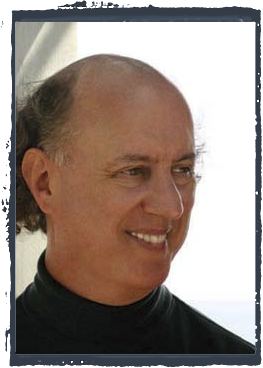I knew that the amazing Leonid Hambro had toured as “straight pianist” to Victor Borge, but hadn’t known he’d also conducted orchestras for the show. Telling me this—ever the provocateur—he added, “If you learn six words in any language, you can rehearse an orchestra.”
I took the challenge: “Faster, slower.”
“Time,” said Leonid. “Very good.”
“Louder, softer.”
“Dynamics. Good.”
“Hmm. Legato, staccato?”
“Articulation, good. I say longer, shorter.” His words are better: they can produce legato, staccato and anything between.
I pushed for Sonority, which doesn’t have a nifty word-pair; and he claimed that chord-voicing determines sonority, so it’s actually part of Dynamics. It’s not completely so—players do have their own sounds!—but perhaps it’s a practical approximation for pressured rehearsals.
His practicality flavored our many conversations, in which I enjoyed his quick mind, his relish in how things work—he would have made a fine engineer—and his anecdotes. I even appeared in a story from my first lesson with him, in 1972: “Thanks for the marvelous session, Lee. But Lee, there’s one thing missing.”
“What’s that, my boy?”
“Lee, the cruelty.”
Thirty years later, he was still telling this with a big laugh; and I still remembered his response: “I just like to hear people play well.” Like others of superlative gifts, he seemed to think the less gifted could do as well as he, if only they knew a few powerful specifics that could readily be conveyed. Sometimes he was right!
His gifts were superlative, that’s for sure. In 2003, he told me of his father—his first teacher—suggesting that the young Leonid listen to a certain pianist on the radio, choose a passage, and write down the fingering he thought the pianist used. Note the assumption that Leonid could take dictation of the music; he was eight or nine at time. And who was the pianist? Art Tatum!
In the 1990s, I encountered an engineering problem when I tried the Bösendorfer computerized player-piano in David Abell’s store, in Los Angeles, and found its playback accurate but too “smooth”-sounding. A pianist friend, Lincoln Mayorga, who happened to be in the store, suggested that the problem was the absence of finger-on-key noise. (The playback mechanism was internal. The keys moved up and down, but nothing touched their playing surfaces.) I found Lincoln’s suggestion immediately convincing, and it started me wondering if finger-on-key noise was actually necessary to piano sound.
A few years later, I learned from harpsichordist Davitt Moroney and another friend, harpsichord-maker John Phillips, that harpsichordists play to the middle of the dip, where the string is plucked, to avoid key-at-bottom noise. I tried doing the same on piano, and it seemed to benefit my legato and my sound. In fortissimo, I had to start the key-stroke fast to get the necessary hammer speed; then ease off to minimize the noise at the bottom.
Despite the difficulty of this, I began dreaming of fortissimos without thunks. Someone said the late Theodore Lettvin, a wonderful artist, could do them; and I wouldn’t have been surprised if Leonid could. I’d seen him do amazing things, like playing a note staccato and tied. Impossible, right? He did it first time, on a clunker piano he’d never touched before.
Another noise—an evil noise I’d long been aware of—was damper-pedal thunk: it’s ugly, and death to legato. It can be cured in two minutes’ daily practice over a few days; so why do we still hear it?
Summing up, we can control damper thunk always, finger-on-key noise often, key-at-bottom noise maybe; so Noise is a real category, though it’s like Sonority in not having a word-pair, rather than like Lee’s big three of Time, Dynamics, Articulation.
I looked forward to bouncing these ideas off Lee; and then came the sad sad news of his death. It seemed incongruous: with his nonstop energy, death shouldn’t have been in his repertoire.
And I learned that he’d lately gotten his “Command Performance” list—from which audience chose the program at concert-time—up to 300 or 350 pieces. The “Les Adieux” Sonata was on the list; I remembered when he played it in his first trial of Command Performance, in our living room. I still imagine him there when I practice every day. “Now, my boy, what should the articulation be in this passage?”
He gave me one of the most important things a teacher can give—and what no real teacher can help but give: insight into the workings of his mind.
Leonid Hambro
